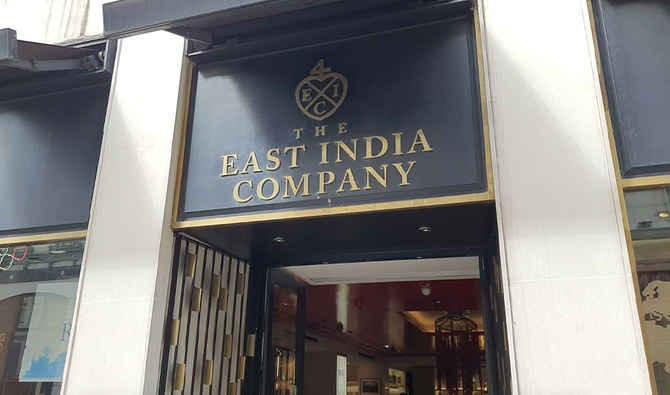LONDON: The East India Company name is synonymous with the colonial exploitation of South Asia, including the Indian Subcontinent, since the 1600s. Today, in one of the great ironies of history, the Company is owned by an Indian.
Founded in London in 1600 to pursue trade in spices, the East India Company was authorized by its charter to wage war. In the next 250 years, it dominated the Indian subcontinent and used brute military force to conquer large chunks of the Mughal Empire, including India, present day Pakistan and Bangladesh and half of Afghanistan.
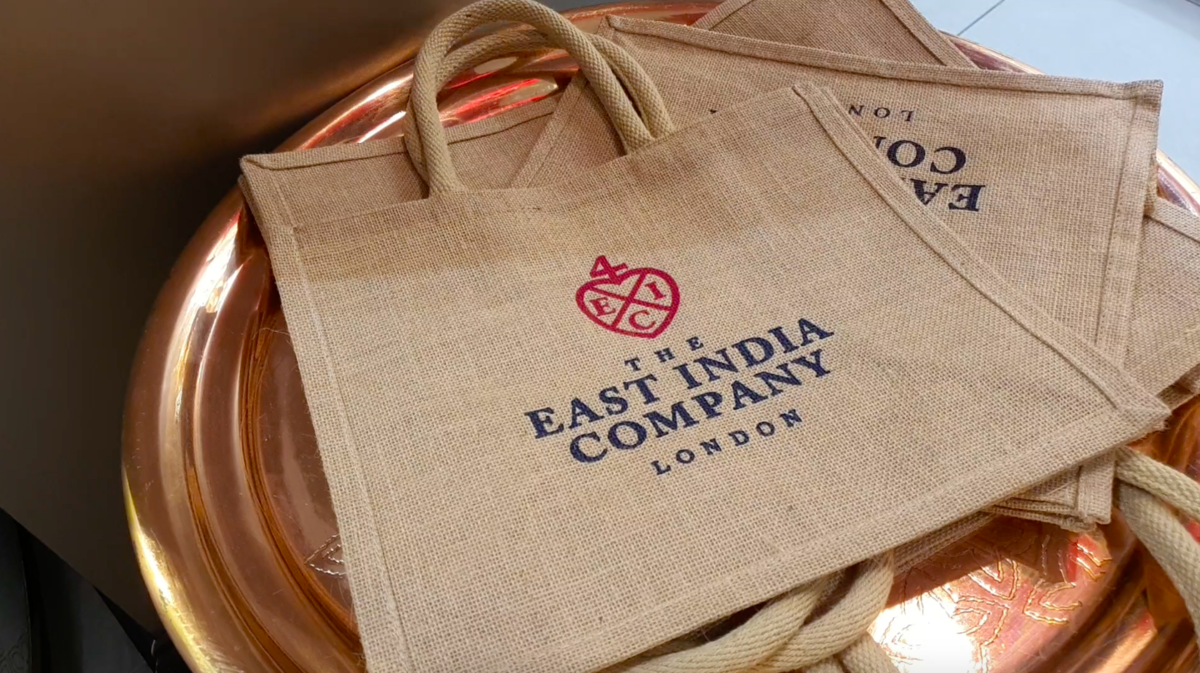
East India Company seal from the 1600's in use on merchandise today at the East Indian Company store in London, on September 4, 2020. (AN photo by Saadia Gardezi)
But the Company was disbanded after soldiers of the company’s own army rose in rebellion against the British in 1857.
A tiny shadow of the company persisted: the trading name and a small tea and coffee concern.
In 2005, Indian businessman Sanjiv Mehta acquired the company and turned it into a consumer brand focused on luxury teas, coffees, and food.
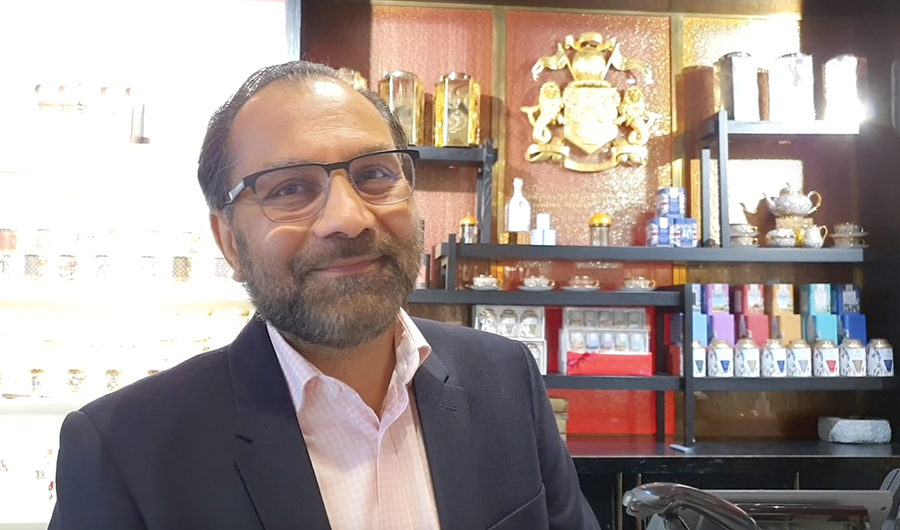
Sanjiv Metha, chairman and CEO of the East India Company, poses for a photograph in London on September 4, 2020. On the wall behind him displayed is the original coat of arms of the East India Company. (AN photo by Saadia Gardezi)
“A company which once owned India is now owned by an Indian ... a feeling of the empire striking back,” Mehta, who opened his first store in 2010 in London’s affluent Mayfair area, told Arab News.
When he learnt that the company’s shares were up for sale, he said he had to own them, “no matter the cost.”
Today, Metha has the license to trade under the coat of arms and seal of the historic company. He also has the rights to mint coins, including one mohur gold coin that was last minted in 1918 in British India.
As an Indian familiar with the history of the Company’s aggressive trade policies and exploitation of the Indian Subcontinent, buying the shares meant emotional closure for Mehta, he said at the East India Company store, its shelves lined with teas and coffees from India, China, Africa, and everywhere in-between.
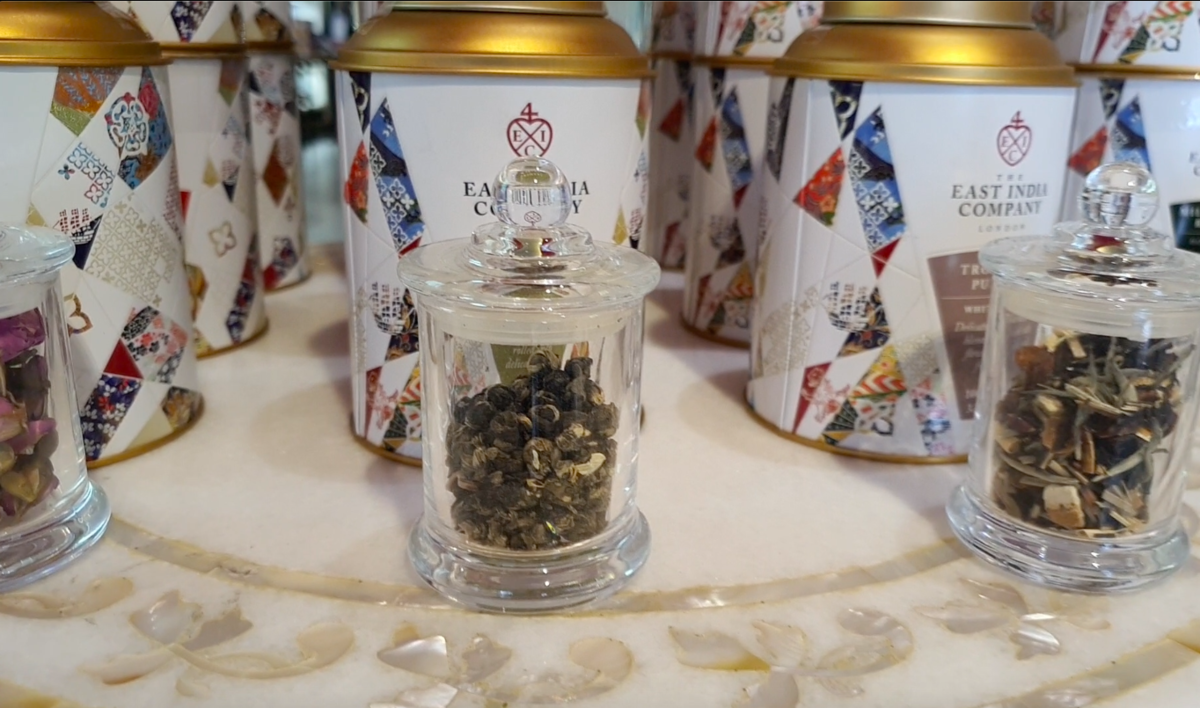
Luxury teas on display at the East India Company in Mayfair, London, on September 4, 2020. (AN photo by Saadia Gardezi)
“This avatar of the East India Company is based on the idea of unity in diversity,” Metha said. “We are taking all the good forward and leaving the bad behind. The previous company was built on aggression, this company is built on compassion.”
In 1600, Queen Elizabeth I granted over 200 English merchants the right to trade in the East Indies to compete against Dutch traders. They became known as the East India Company and by the 18th century dominated the global textile trade, with an army to protect their interests.
Most of the forces were based at three main “stations” in India: Madras, Bombay, and Calcutta.
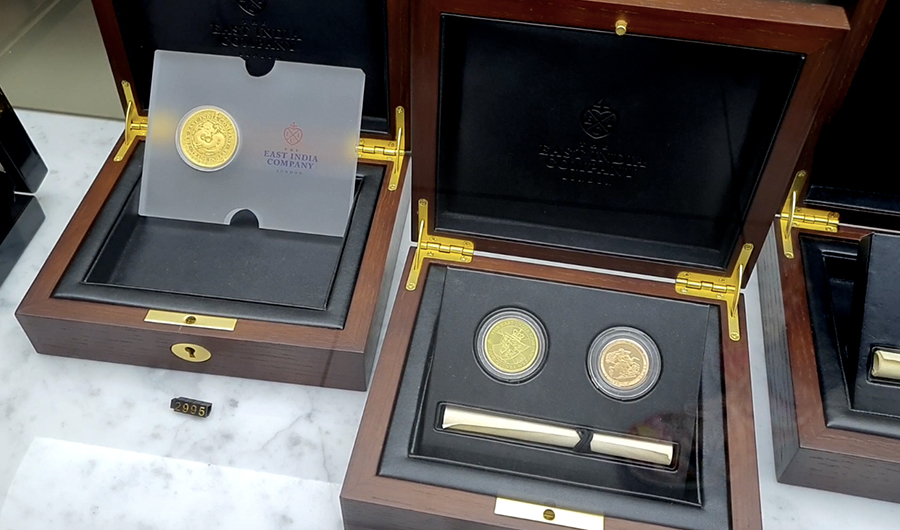
Golden coins from the time of the British Raj, reminted by the East India Company, on display at its shop in London's Mayfair on September 4, 2020. (AN photo by Saadia Gardezi)
In 1857, Indian soldiers revolted against the British and the Company’s territorial and economic control was shifted to the British government. What remained was a small tea and coffee concern and trademarks.
In 1874, the East India Company dissolved.
But can a company with a dark history of colonial exploitation be rehabilitated? Metha certainly thinks so.
“We were worried about some of the reactions that might come out of it being the colonizer,” he said. “But due to the fact that the one who was colonized bought the company, the story is extremely positively received by the Indian Subcontinent.”


